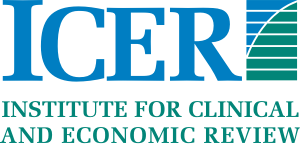— Independent appraisal committee vote was split on the net health benefit of suzetrigine compared to non-systemic therapies; suzetrigine has potential to be cost-saving due to avoided future cases of opioid use disorder —
BOSTON, March 31, 2025 – The Institute for Clinical and Economic Review (ICER) today released a Final Evidence Report assessing the comparative clinical effectiveness and value of suzetrigine (Journavx™, Vertex Pharmaceuticals) for the treatment of acute pain.
ICER’s report on this therapy was the subject of the February 2025 public meeting of the Midwest CEPAC, one of ICER’s three independent evidence appraisal committees.
Downloads: Final Evidence Report | Report-at-a-Glance | Policy Recommendations
“It has been a long time since we have had a new class of drugs for acute pain,” said ICER’s Chief Medical Officer David Rind, MD. “Suzetrigine has a different mechanism of action from prior oral therapies, and this creates options for treatment alone or in combination with existing medications. The overall value of this new drug is linked to the risk of a one-week course of opioids leading to opioid use disorder. If the risk is not zero and suzetrigine proves to be safe, we believe that suzetrigine will likely be a cost-effective, and perhaps a cost-saving, alternative from a long-term perspective. However, we note the skepticism about the evidence base from members of the Midwest CEPAC. Longer term data will help define the appropriate role of suzetrigine in practice, but a pain medicine with a new mechanism of action will create options for patients and clinicians.”
ICER’s Virtual Public Meeting: Voting Results on Clinical Effectiveness and Contextual Considerations
ICER assessed, and the independent appraisal committee voted on the evidence for the net health benefit of suzetrigine in adults with acute pain not adequately controlled with non-systemic therapies:
- Half of the panelists (7-7) found that current evidence is adequate to demonstrate a net health benefit of suzetrigine plus non-systemic therapies in comparison to non-systemic therapies alone.
- The majority of panelists (12-2) found that current evidence is not adequate to demonstrate a net health benefit of suzetrigine plus non-systemic therapies in comparison to oral opioid analgesics plus non-systemic therapies.
- The panelists unanimously (14-0) found that current evidence is not adequate to demonstrate a net health benefit of suzetrigine plus non-systemic therapies when compared to oral NSAIDs plus non-systemic therapies. Appraisal committee members cited the lack of evidence comparing suzetrigine to NSAIDs, and the mixed results of the Phase III trials when explaining their votes.
Panel members also weighed potential benefits and disadvantages beyond the direct health effects and weighed special ethical priorities. Voting highlighted the following as particularly important for payers and other policymakers to note:
- There is substantial unmet need despite currently available treatments.
- This condition is of substantial relevance for people from a racial/ethnic group that have not been equitably served by the healthcare system.
ICER’s Virtual Public Meeting: Voting Results on Long-Term Value for Money
The FDA approved suzetrigine for acute pain on January 30, 2025. The manufacturer announced a US price of approximately $232.50 for a one-week course of treatment for acute pain.
After reviewing the clinical evidence and considering the treatments’ other potential benefits, disadvantages, and contextual considerations noted above, the Midwest CEPAC evaluated the long-term value of suzetrigine at its current pricing:
- Nine panelists found that suzetrigine at its current pricing represents “intermediate” long-term value for money, with one panelist voting “high” long-term value for money. Four panelists found that suzetrigine represents “low” long-term value for money, citing the lack of long-term data on safety and mixed results of the Phase III trial.
Key Policy Recommendations
ICER’s independent assessment of value informs the critical decisions that stakeholders across the US health system need to make around pricing and coverage. Following the voting session, a policy roundtable of experts — including clinical experts, patients and patient advocates, the manufacturer, and representatives from US payers — convened to discuss the pricing implications and recommendations to ensure fair access. Key recommendations stemming from the roundtable discussion include:
- All stakeholders have a responsibility and an important role to play in ensuring that all patients with acute pain are treated appropriately and equitably. ICER repeatedly heard from multiple stakeholders about inadequate management of acute pain in Black Americans, as well as evidence that this inadequate management may be tied to both implicit and explicit bias.
- Manufacturers should set prices that are aligned with net benefit. Vertex deserves recognition for appropriately pricing suzetrigine. However, the manufacturer should also conduct additional research on suzetrigine to answer open questions.
- Clinicians and clinical societies should advocate for broader patient access to multimodal pain management.
ICER’s detailed set of policy recommendations is available in the Final Evidence Report and in the standalone Policy Recommendations document.
About ICER
The Institute for Clinical and Economic Review (ICER) is an independent, non-profit research institute that conducts evidence-based reviews of health care interventions, including prescription drugs, other treatments, and diagnostic tests. In collaboration with patients, clinical experts, and other key stakeholders, ICER analyzes the available evidence on the benefits and risks of these interventions to measure their value and suggest fair prices. ICER also regularly reports on the barriers to care for patients and recommends solutions to ensure fair access to prescription drugs. For more information about ICER, please visit www.icer.org.
